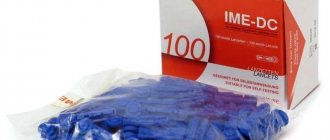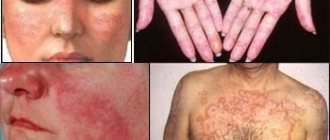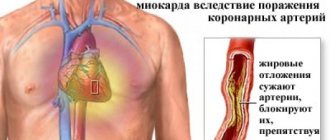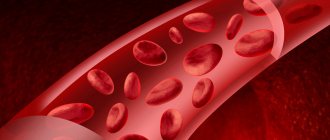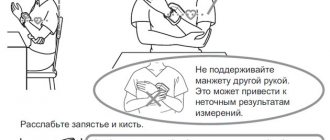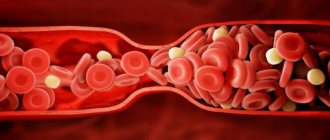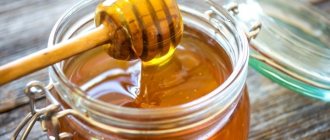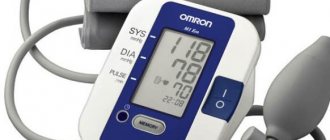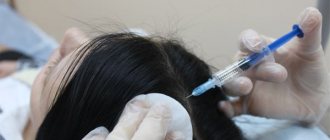The biological fluid that supplies tissues and organs with oxygen and nutrients has a complex composition. Blood cells differ in structure and structure and perform different functions. Their number, ratio and some characteristics of “behavior” can provide important information about health status.
Types of blood cells
The basic classification of elements of biological fluid involves their division into three groups. The basic cells of human blood are platelets, leukocytes and erythrocytes. The first type is also called plates because of their flat shape. Platelets are colorless elements that do not have nuclei. The main feature of the cells in question is the ability to activate and transition to another state.
White blood cells
The next large group is nuclear spherical blood cells that do not have a specific color. Leukocytes combine several types of elements with different functions. Depending on their purpose, the described blood cells “live” from 2-3 hours to several years. The specificity of the presented elements is their ability to move quickly, intensely and penetrate through any barriers, including capillary walls.
Red blood cells
The third group of elements is responsible for the bright color of biological fluid. Red blood cells are erythrocytes. They are flat and biconcave, like a disk with a hole in the center. These are very important elements responsible for many functions, including the delivery of vitamins, amino acids and enzymes. The main characteristic of blood cells of this type is the transport of oxygen to organs and tissues. This task is carried out thanks to the protein hemoglobin, which fills each red blood cell.
Types of leukocytes
White blood cells are usually divided primarily by structure. Some contain granules inside, therefore they are called granulocytes, others do not have such formations - agranulocytes.
In turn, granulocytes are classified according to their ability to perceive certain dyes into neutrophils, basophils, and eosinophils. Cells that do not have granules in their cytoplasm are monocytes and lymphocytes.
Neutrophils
One of the most numerous leukocyte populations in adults. They got their name due to their ability to be colored with dyes with a neutral pH. As a result, the granules within the cytoplasm turn purple to brown in color. What are these granules? These are unique reservoirs for biologically active substances, the action of which is aimed at destroying genetically foreign objects, maintaining and regulating the life of the immune cell itself.
Neutrophils differentiate in the bone marrow from stem cells. During the process of maturation they undergo structural changes. This mainly concerns changes in the size of the nucleus; it acquires characteristic segmentation, correspondingly decreasing in size. This process occurs in six stages - from juvenile to adult forms: myeloblast, promyelocyte, myelocyte, metamyelocyte, band, and then segmented neutrophil.
Observing neutrophils of varying maturity under a microscope, you can see that the nucleus of a myelocyte is round, while that of a metamyelocyte is oval. The rod type has an elongated nucleus, and the segmented one has 3-5 segments with constrictions.
Neutrophils live and mature in the bone marrow for about 4-5 days, and then enter the vascular bed, where they remain for about 8 hours. Circulating in the blood plasma, they scan the body’s tissues and, when “problem areas” are detected, they penetrate there and fight infection. Depending on the intensity of the inflammatory process, their lifespan in tissues ranges from several hours to three days. After this, the neutrophils, having valiantly performed their functions, are destroyed in the spleen and liver. In general, neutrophils live for about two weeks.
So how does a neutrophil act when it detects a pathogen or a cell with altered genetic material? The cytoplasm of white blood cells is plastic, capable of stretching in any direction. When a neutrophil approaches a virus or bacterium, it captures it and absorbs it. Inside, the same granules are connected, from which enzymes are released, aimed at destroying the foreign object. In addition, in parallel, the neutrophil is able to transmit information to other cells, triggering the process of an immune response.
Basophils
The structure is very similar to neutrophils, but only the granules of these cells are sensitive to basic dyes with a more alkaline pH. After staining, the granularity of basophils acquires a characteristic dark purple, almost black color.
Basophils also mature in the bone marrow and go through the same stages of development from myeloblast to mature cells. Then they enter the blood, circulate there for about two days and penetrate the tissues.
These cells are responsible for generating the inflammatory response, attracting immune cells to tissues and transmitting information between them. The role of basophils in the development of anaphylactic reactions is also interesting. Biologically active substances released from granules attract eosinophils, the number of which determines the intensity of allergic manifestations.
Eosinophils
To find these cells in a blood smear, you will need a dye with an acidic pH. In practice, eosin is most often used, in fact, this is where these cells got their name. Once dyed, they turn bright orange. A characteristic distinguishing feature is the size of the granules - they are much larger in size than those of neutrophils or basophils.
The development of eosinophils is not fundamentally different from that of other granulocytes; it also occurs in the bone marrow. However, after entering the vascular bed, the bulk of eosinophils rush into the mucous membranes. They are able to absorb pathogenic agents, like neutrophils, only they work in the mucous membranes, for example, of the digestive tract, trachea and bronchi.
At the same time, eosinophils play a huge role in the development of allergic reactions. A large number of biologically active substances released when eosinophil granules rupture cause symptoms characteristic of people suffering from atopic dermatitis, bronchial asthma, urticaria, and allergic rhinitis.
Monocytes
These agranulocytic cells can be of various shapes: with a rod-shaped, oval or segmented nucleus.
They are formed in the bone marrow from a monoblast and almost immediately enter the blood, where they circulate for 2-4 days. The main function of monocytes is the regulation of the immune response through the release of various regulatory substances from granules that increase or decrease inflammation. In addition, monocytes promote tissue regeneration, skin healing, and restoration of nerve fibers.
Macrophages
These are still the same monocytes, but migrated to the tissue from the vascular bed. When stained, the mature cell acquires a bluish color. Its cytoplasm contains a large number of vacuoles, which is why macrophages are also called “foam cells.” They live in tissues for several months. The peculiarity is that some of them can be “wandering” and circulate through different tissues, and some are “stationary”. Such cells in certain tissues have different names, for example, liver macrophages are Kupffer cells, brain cells are microglial cells, and those that ensure bone renewal are osteoclasts. Provide phagocytosis of pathogenic objects.
Lymphocytes
The cells are round in shape with a relatively large nucleus. Lymphocytes are formed in the bone marrow from a precursor cell, a lymphoblast, and go through several stages. Moreover, primary differentiation occurs in the bone marrow, and secondary differentiation occurs in the spleen, lymph nodes, Peyer’s patches and, mainly, in the thymus.
Lymphocytes that have undergone additional maturation in the thymus are called T-lymphocytes, and in other immune organs - B-lymphocytes. Such double preparation is extremely necessary, because these are the most important immunocompetent cells that provide protection for the body. They circulate in the blood for three months and, if necessary, penetrate into tissues to perform their functions.
T-lymphocytes provide nonspecific immunity, fighting all objects that carry foreign genes: bacteria, viruses, tumor cells. In addition, T cells are divided into types depending on the function they perform.
- Killer T cells are the first line of defense cells; they provide ultra-fast cellular immune responses and destroy virus-infected or tumor cells.
- Helper T cells are cells that help transmit information about foreign material, cooperating with the work of other immune cells. As a result of this influence, the response develops more intensely and quickly.
- T-suppressors are cells whose responsibilities include regulating the work of T-killers and T-helpers. They prevent the immune system from overreacting to various antigens. If the function of T-suppressors is impaired and reduced, then autoimmune diseases and infertility develop.
B lymphocytes create specific immunity, having the ability to form antibodies against certain agents. Moreover, T lymphocytes are mostly active against viruses, and B lymphocytes are active against bacteria.
B cells provide the formation of memory immune cells. Having once encountered a foreign agent, the body forms immunity and resistance to certain bacteria and viruses. Vaccination works on the same principle. Only in vaccination preparations are bacteria and viruses in a killed or weakened state, unlike those that can be encountered in the normal environment. Some memory cells are particularly resistant and provide lifelong immunity, others die over time, so revaccination is carried out to prevent particularly dangerous infections.
Blood cell development
Any elements undergo a certain formation cycle, which includes several stages. The formation of blood cells is called hematopoiesis. This process for platelets, erythrocytes and leukocytes has a single source. All of them develop from special stem cells (hematopoietic or hematopoietic). The mechanism goes through the following stages:
- Stem cells are divided into 2 groups - myeloid and lymphoid progenitors.
- The first type continues to develop and differentiates into 4 subgroups. These are megakaryocytes (“young” platelets), erythrocyte precursors, myeloblasts and mast cells.
- The second group is the basis for T- and B-lymphocytes, natural killer cells.
Where are blood cells produced?
The center of hematopoiesis is the bone marrow, mainly the stromal region. Hematopoiesis occurs in the stem cells it contains. In order for “adult” elements to be formed from the precursors of platelets, erythrocytes and leukocytes, other organs are involved. Mature blood cells are formed as a result of the production of special substances:
- erythropoietins - proteins that arise against the background of oxygen deficiency (erythrocytes);
- thymus hormones regulate the formation and concentration of leukocytes;
- thrombopoietins - synthesized by the liver to stimulate platelet development.
Blood cells - structure and functions
Each of the variants of biological fluid components is designed for specific tasks. All types of blood cells interact and come from identical “progenitors,” but their functions are different, as is their structure. These characteristics are also important when testing biological fluids, because any violations of the parameters indicate pathological conditions in the body.
Red blood cells - structure and functions
Red blood cells are “containers” of hemoglobin. This is a special pigmented protein that gives biological fluid a rich color. It is important to study what red blood cells look like and what they are made of; their structure and functions are closely related. Hemoglobin, the filler of red cells, simply includes 2 parts: heme - a core with iron atoms, and globin - a protein helix.
Externally, red blood cells resemble a flat biconcave cake. This form provides the ability to effectively capture oxygen in the alveoli of the lungs and transport it. The cells are very small (up to 10 microns) and elastic, due to which they move easily even in the thinnest vessels and capillaries. Red blood cells are highly specialized and perform the following functions:
- respiratory;
- nutrient transfer;
- adsorption of toxins;
- blood clotting (indirect);
- storage of antigens.
Leukocytes - structure and functions
White blood cells are classified into two large groups - agranulocytes (non-granular) and granulocytes (granular). They differ in the structure of their nuclei, the tasks they perform, and their ability to interact with foreign microorganisms and organelles. The first type is divided into monocytes and lymphocytes. The second group includes the following types of leukocytes:
- neutrophilic;
- basophilic;
- eosinophilic.
Simplified structure of leukocytes - nucleus, body and pseudopods. The cell visually resembles a ball of lint. The pseudopods provide the leukocyte with maximum mobility, the ability to penetrate any membrane and overcome vascular walls. This is necessary to perform leukocyte functions:
- protection against infections, foreign bodies, foreign protein structures;
- provocation of inflammation;
- ensuring the functioning of the immune system;
- regulation of allergic reactions;
- response to parasitic infestations;
- destruction of cancer cells.
Platelets - structure and functions
These blood cells have unique properties. As with red blood cells, it is important to consider what platelets contain; their structure and functions also depend on each other. The cells do not have a nucleus, but a large number of granules are present. When a platelet is activated against the background of damage, it changes its spherical shape and flattens, turning into a plate with processes. The number of such “branches” reaches 10 pieces, their length can exceed the diameter of the cell by 5-10 times. Thanks to the processes, platelets attach to the “hole” site and to each other, forming a plug necessary for healing.
The structure of the described elements is schematic:
- Glycocalyx.
Layer above the membrane with an open system of tubules. The glycocalyx triggers the platelet flattening mechanism and its activation. - Membrane.
Contains lysosomes that interact with blood clotting factors. - Matrix or gel zone.
It contains mitochondria that secrete specific granules. - Organelles.
This area is a collection of different granules responsible for the blood clotting process.
Cage Guide: The Most Famous Patterns
How often do we see prints and patterns on fabrics that have already become familiar in stores, on catwalks, on the Internet and on TV, but we don’t know what they are called correctly! Without realizing it, we say “checkered fabric” in reference to so many different patterns that it literally borders on disrespecting the history of these famous patterns. Today, as part of our new Theme of the Month, our “Cage Guide” will help you understand the intricacies of ornaments!
Tartan
Most often, tartan is called “tartan”, although in fact these two words originally meant slightly different things: tartan - fabric, tartan - pattern. Of course, this print is famous thanks to Scottish kilts: “tuar tan” translates as “color of the area,” and this is by no means lyrical poetics, but the most practical reality - the Scottish clans dyed sheep’s wool for kilts with natural dyes. Some used seaweed for brown, some alder bark for black, some blueberries for blue, and since different dyes were obtained in different parts of Scotland, the colors of the tartan clearly indicated where the clan came from. So it’s not surprising that there are a huge number of varieties of tartan in the world, each of which has its own name.
"Black Watch"
One of the most famous tartans is the Black watch military tartan, which translates as “black watch”. In 1739, George II created this special regiment, which spent the next 270 years guarding the interests of the British Crown. Over these long years, the Black Watch fought 164 battles, each of which with distinction. Today, any of us can touch history by choosing this noble pattern of deep, rich tones.
Burberry
In 1924, a checkered pattern appeared on the lining fabric of the trench coats of the famous British brand Burberry, which is now unmistakably recognized by any fashionista. The print consists of four colors: black, white, sand and red. The brand's founder, Thomas Burberry, was inspired by the traditional patterns of English plaids. The Burberry check is called Nova Check.
Glencheck
This discreet pattern appeared in the 19th century as one of the varieties of the Countess of Seafield's ancestral tartan. The Countess dressed her huntsmen in glenchek, and it was during the next hunt that Edward VII, Prince of Wales first saw it. The royal loved this check so much that he asked to have a suit made from a similar fabric, and thanks to the prince’s undiminished affection for this pattern, the nickname “Prince of Wales” was assigned to the glencheck. The classic glencheck is characterized by an achromatic color scheme; the main colors used in this pattern are white and black or, as an option, gray. It is entirely acceptable to use other muted tones, the main thing is the alternation of light and dark stripes, vertical and horizontal, the interweaving of which forms a pattern. Of course, glencheck is ideal for men's suits, due to its restraint and aristocracy, but nowadays this check is equally popular in both men's and women's fashion, and even among interior designers.
Vichy
Vichy check - straight from the warm French Provence! This extremely simple type of cell was invented by local craftsmen in 1850 in the town of Vichy. The pattern is a small checkered pattern, mainly made of two colors, most often red-white or blue-white. It is noteworthy that the French themselves did not rate the invention highly - the pattern was used for tablecloths and napkins. But in America, the Vichy check literally drove everyone crazy - in the 50s, Brigitte Bardot appeared on the cover of ELLE magazine in a dress with a full skirt made of white and pink checkered fabric, which marked the beginning of the triumphant march of Vichy through the wardrobes of fashionistas all over the world .
Chicken foot
If, when you see this pattern, you are ready to confidently say “Chanel” - alas, I will have to interrupt you! Chanel, of course, contributed to the popularization of this ornament, but its ancestors were... the same Scots! In its modern form, the “chicken foot” appeared in the 19th century, formed on the basis of border tartan. You can also find the name “dog tooth”, but, as a rule, this name refers to the pattern if it is depicted noticeably larger than the classic version. This unique name is justified by the fact that the pattern really looks like the front fangs of a dog or the prints of chicken paws.
Pepita
Many people confuse “pepita” and “chicken foot”, because at a superficial glance they are really similar, but in fact they are significantly different. "Pepita", named after the Spanish dancer known as Pepita de Oliva, consists of small squares with small "curls" at the corners. These three patterns should not be confused:
1. Pepita 2. Border tartan 3. Chicken foot
Madras cage
Unlike the dense, heavy fabrics that we looked at before, Madras check fabric is the embodiment of summer; it was not without reason that it was invented in the Indian city of Madras (now Chennai). During the period of British colonization of this territory, Indians developed this comfortable fabric, borrowing a pattern from the world famous tartan check. But the tropical climate and love for bright colors could not help but leave their mark - the Madras check is associated with catchy, noticeable colors and unusual combinations. Real madras can be distinguished by a characteristic feature - the pattern is present on both sides of the fabric.
Tattersall
Initially, the word “tattersall” meant the ornament on horse blankets sold by Tattersall's, but later these checks migrated to men's shirts, after which they set off to float freely on the waves of fashion. The most common background colors are white, beige, cream, and the stripes themselves can be red-black, blue-black, violet-brown, blue-violet, pink-green, although if desired, you can find a wide variety of color combinations. Photo: pinterest.com
MORE INTERESTING ARTICLES, MASTER CLASSES AND PATTERNS ARE WAITING FOR YOU ON THE TOPIC PAGE OF THE MONTH!
Normal blood cells
Concentration, quantitative ratio and other criteria for the composition of biological fluid are irreplaceable data for making most diagnoses. The number of red blood cells can provide the doctor with information about the efficiency of oxygen transport, and the rate of their sedimentation - about the presence of an inflammatory response. The leukocyte formula is necessary to determine the functioning of the immune system; platelet volume will help determine clotting ability. Blood cell norms are associated with age.
| Indicators | Age | |||||
| Up to 3 days | Up to 1 month | Up to 6 months | Up to 1 year | 1-6 years | 7-16 years | |
| Hemoglobin, g/l | 180-240 | 115-175 | 110-140 | 110-135 | 110-140 | 110-150 |
| red blood cells, *10 in 12/l | 4,3-7,6 | 3,8-5,6 | 3,5-4,8 | 3,6-4,9 | 3,5-4,5 | 3,5-5,1 |
| Reticulocytes, % | 30-51 | 3-15 | 3-15 | 3-15 | 3-12 | 3-12 |
| platelets, *10 in 9/l | 180-490 | 180-400 | 180-400 | 180-400 | 160-390 | 160-380 |
| ESR, mm/h | 2-4 | 4-8 | 4-10 | 4-12 | 4-12 | 4-15 |
| Leukocytes, *10 in 9/l | 8,5-24,5 | 6,5-13,5 | 5,5-12,5 | 6-12 | 5-12 | 4,3-10 |
| Leukocyte formula, % | ||||||
| Rod neutrophils | 1-17 | 0,5-4 | 0,5-4 | 0,5-4 | 0,5-5 | 0,5-6 |
| Segmented neutrophils | 45-80 | 15-45 | 15-45 | 15-45 | 25-60 | 35-65 |
| Eosinophils | 0,5-6 | 0,5-7 | 0,5-7 | 0,5-7 | 0,5-7 | 0,5-7 |
| Basophils | 0-1 | |||||
| Lymphocytes | 12-36 | 40-76 | 42-74 | 38-72 | 26-60 | 22-54 |
| Monocytes | 2-12 | |||||
After the completion of the formation of immunity, upon reaching 16-18 years of age, there is no differentiation by age in what quantities of adult blood cells. The norms differ slightly depending on gender. The results of the tests must be interpreted by a professional therapist. Minor deviations from the figures indicated in the tables are not considered pathology.
Laboratories use equipment of varying quality, with a certain calculation accuracy and error. These parameters should also be taken into account when decrypting. In some cases, established numbers are indicated without tenths. Modern laboratories, equipped with the latest equipment, provide the most detailed report, down to thousandths.
| Indicators | Floor | |
| Men | Women | |
| Hemoglobin, g/l | 130-160 | 120-140 |
| Red blood cells, *10 in 12/l | 4-5,1 | 3,7-4,7 |
| Reticulocytes, % | 0,2-1,2 | |
| Platelets, *10 in 9/l | 180-320 | |
| ESR, mm/h | 1-10 | 2-15 |
| Leukocytes, *10 in 9/l | 4-9 | |
| Leukocyte formula, % | ||
| Rod neutrophils | 1-6 | |
| Segmented neutrophils | 47-72 | |
| Eosinophils | 0-5 | |
| Basophils | 0-1 | |
| Lymphocytes | 18-40 | |
| Monocytes | 2-9 | |
Red checkered dress: how to choose and what to wear with it
A plaid print dress is a popular and versatile classic that will never go out of style. A properly chosen dress looks feminine, sophisticated and elegant. The outfit is appropriate in the office, on a walk, on a date, at an official reception and at a special event.
Varieties of checkered prints
The fashion for plaid first appeared in the seventies of the last century. There are a large number of shapes, sizes and colors of plaid print.
- Scottish cell . Tartan is a classic type of tartan, originally from Scotland. Tartan is a checkered pattern woven from vertical and horizontal stripes of different widths and colors, formed by weaving wool or cotton threads. Traditionally used to make Scottish men's kilts, symbolizing a particular area, clan or organization. There are more than 6 thousand tartan designs. Brown, green-red, black-green, red-black are the most common shades. Such a cell always has a dark or bright color. Black and red is the most favorite color of modern fashion trends.
REFERENCE. Using a pattern with a different angle of inclination of the cage, you can adjust the figure, making it more graceful.
- Vichy or gingham. The popular feminine print created in France is not considered tartan. Consists of alternating two, large or small, colored stripes on a white background. In the classic version, it is made in pink and blue tones on cotton fabrics and is associated with the French Provençal style. Nowadays, black and white, red and white, blue and white, black and gray contrasting checkered patterns are most often used. Clothes with small Vichy checks are made from satin, silk, cotton and velvet fabrics. Vichy check goes well with lace and denim.
- Mesh cell. A pattern applied to a material resembling a mesh in the form of intersecting thin strips forming a complex pattern. If the design elements are based on one shade, the material has a strict appearance; if there are several, then it is brighter and more attractive. The mesh cage is large and resembles a Scottish one. Suitable for creating formal style and formal dresses.
- Glencheck or Prince of Wales check. Named after the Prince of Wales, the check consists of alternating dark and light small stripes, horizontally or vertically arranged, forming an ornament. The traditional design consists of three colors: black, white, brown and gray.
- Madras cage . An asymmetrical large check, which is based on red, beige, white and black shades, while the pattern is present on both sides of the fabric. Dresses with such a check are not suitable for creating an office style. It is better to wear clothes made from this fabric to attend events in an informal setting. Dresses with Madras checks go well with chunky boots, leather biker jackets, summer sandals, and heels.
- Argyll. The classic Scottish pattern consists of a checkered diamond pattern with cross stripes of different colors on the knitted material. Diamonds can be square and elongated, of the same or contrasting color.
- "Crow's feet." Black and white check in the style of Coco Chanel, a small pattern with elongated diagonal corners of the squares. A variation of this print is considered to be a larger “dog fang” pattern; the cage is more deformed with an elongated angle.
IMPORTANT. Dresses with houndstooth, glenchek, and pepita are best suited for women over forty.
- Pepita. Similar to a houndstooth pattern, but the design on the fabric with small squares has swirls that look like a starfish
- Burberry check. Scottish check in sand tones. On a beige fabric background, thin red lines and wide gray lines form a checkered pattern. The four main colors used for decoration are black, red, white and beige, but there are other variations of this color.
Features of print stylization
With a dress with a red check, you can create all sorts of looks: from casual and office to elegant evening. With proper styling, a plaid print will look beautiful and elegant. Suitable for girls and women of different ages, with any shape, hair color and different styles. Checkered models can be worn to special occasions, friendly meetings and to the office.
It is important to choose a suitable style that matches the characteristics of your figure: with sleeves, with straps, trapezoidal, straight, loose and semi-fitting silhouette and skillfully complement it with accessories. Current styles in which the check looks most advantageous: shirt dress, sheath, with peplum, empire style, A-line dress, sundress, strapless mini model, floor-length with a belt.
REFERENCE. For women with an hourglass figure, an outfit with a gingham pattern will suit you.
The classic, elegant sheath model in plaid goes well with a plain jacket and suits everyone without exception.
A red plaid shirt dress with a see-through button fastening, collar and sleeves with cuffs is worn with a belt. You can also emphasize your waistline by wearing a cropped jacket or denim jacket on top. Ballet flats or slip-ons are suitable shoes for this outfit. The model is suitable for different events, young mothers and busy girls. Short plaid shirt dresses are combined with skinny jeans, leggings or shorts.
In the cold season, a beige coat with suede ankle boots will go well with a shirtdress. For an evening out, it is better to choose a feminine handbag, fashionable sandals or high-heeled shoes. For a country style look, pair it with fringed cowboy boots.
IMPORTANT. To visually reduce wide hips, it is better to wear peplum or wrap dresses.
A popular option is a checkered model with an offset waistline. A dress in the baby-doll style with a high waistline and a full skirt, or vice versa, with a low waist and a straight skirt in the jazz style. In such models, combined fabrics are often used, with a large checkered top and a small checkered bottom.
The feminine model in the empire style perfectly emphasizes the shape of a woman's breasts, and with a fitted silhouette, the waistline. They can be of different lengths and are suitable for almost every figure.
A checkered A-line product is suitable for all types of figures, a trapezoidal one will hide voluminous hips, a model with a peplum will show a protruding tummy, a fitted one will emphasize a thin waist and make the figure more graceful.
ATTENTION. Red dresses with a checkered print do not tolerate a lot of accessories. From jewelry it is enough to wear a bracelet and earrings, a belt and glasses.
The length of the products can be different, long, medium (midi) or short (mini). A long checkered dress to the ankles or to the floor, with a fitted top, can be worn to important and special events, parties and in everyday life. Classic stiletto heels in black, dark red or red will help complete the look. Everyday checked models can be short or midi length, with a yoke, with a square, V-neck, and collars of different shapes.
IMPORTANT. To add volume to narrow hips, it is worth using fabric not with a classic, but with an oblique check.
For girls with a standard body type, large checkered midi-length items are suitable. They can be worn to work, school and meetings. Poorly chosen styles can flatten your figure. The most unfortunate one is plaid with a white collar and high-waisted in bright colors. You should select styles with an A-line below the knee, a high waist, a circle skirt, a floor-length skirt with an asymmetrical, medium-sized check.
Classic English style for the office
English style is a strict, restrained image, fit to the figure, simplicity and practicality, business comfort and elegance. A dress for work does not have to be plain and black. The shape of clothing should be elongated or rectangular. There may be two slots or cuts. A red plaid dress is perfect for office style. It is better if it is of medium length, knee-length or slightly higher, floor-length or ankle-length, straight and without unnecessary details, with or without sleeves and a small slit at the back.
A straight model made of fabric with a checkered print can be found in dark and light shades of brown, beige and red. The look will be completed with a black strap, classic pumps or small wedges, a fitted jacket and dark brown or beige accessories in the same palette. The bag should have a classic shape without unnecessary details - oval, round, square, rectangular. A briefcase, travel bag or clutch will work well.
IMPORTANT. For a business woman, it is better to choose a strict style sheath for the office without unnecessary decoration with high-heeled shoes.
A shirt cut with sleeves and a turn-down collar, a strict sheath dress, an a-line silhouette, a straight sundress and a jacket dress are also considered traditional. In combination with a fitted top, a full skirt in a checkered print looks good. The pleated option would also be appropriate. A semi-fitted checkered dress with a peplum located diagonally to the cage is ideal. An accentuated waist and contrasting color cuffs and collar will add sophistication to the look.
A plain cardigan or jacket will help to emphasize the proportions of a loose silhouette of a dress for the office; shoes, ankle boots or high heeled boots in black or brown will complement the look. Wear a checkered straight or semi-fitted sundress with a blouse or golf.
The houndstooth pattern in office clothes will combine rigor and sophistication. Do not use large checks when choosing fabric. Products with small black and red checks look more formal and original.
"Boho" for a romantic date
Boho-style dresses create a comfortable, comfortable and cozy look. The characteristic features of dresses of this style are a loose cut and three-quarter length flared sleeves. The waistline is emphasized with belts or laces. The models are made of natural materials with numerous patterns, ethnic patterns and bright prints. The style combines lace, flannel, leather, velvet, fringe, stones of various sizes, wool and knitwear. The length of dresses can be short or as long as possible.
REFERENCE. Boho style is a mixture of ethnic and national motifs, hippie, gothic and grunge style. It combines incompatible things: different textures of fabrics and patterns, boots with romantic dresses, lace and scarves.
“Boho” has many different styles, such dresses are suitable for various events and romantic dates. A long red checkered dress made of light flowing fabric can be complemented with plain guipure, a scarf, large jewelry, massive earrings and bracelets. It is better to choose an asymmetrical checkered print material rather than horizontal. Sandals with fringes, stones, patterns in ethnic style, with thin, intertwining stripes on a flat sole will suit the dress.
For an evening dress, you should choose silky fabrics and less voluminous silhouettes. A belt made of suede or snakeskin, emphasizing the waist, will decorate the outfit. A plaid, spacious tunic dress with flared sleeves, a V-neck, always made of multi-layered fabric, the length of which reaches mid-thigh. For girls with curvy figures, it is better to separate the bottom and top using a belt, placing it just below the chest.
Products can be combined with elongated, knitted jackets. In the cold season, wear a straight-cut coat, leather cowboy boots, rough boots or ankle boots with studs without high heels. As additional accessories, it is preferable to choose small leather shoulder bags or a large bucket bag.
Grunge style for walks and music festivals
Grunge style is a daring protest against traditional fashion and glamor, complete freedom and comfort mixed with absolute grooming. There are no rules in this style; girls who are tired of the laws of etiquette, conventions and uncomfortable clothes will like it. The peculiarity of the images is the denial of all fashion trends and boundaries, the desire for freedom and self-expression.
Grunge is characterized by multi-layered outfits, the use of rivets, patches, leather inserts, abrasions, metal parts and fabrics with raw edges in dark natural shades without sparkles and rhinestones. Grunge harmonizes well with clothing in vintage, military and casual styles.
The red checkered model can be adapted to this style with the help of a casual and layered look, complementing it with shoes and accessories. Outfits should be chosen in voluminous styles. With long and shapeless sundresses and dresses, you can wear a sweater with patches, a shapeless shirt or a leather biker jacket with metal studs.
The look will be complemented by unusually shaped glasses, a backpack, military-style shoes, sports sneakers or ballet flats, and massive platform boots. Suitable headwear is a knitted beanie hat, a wide-brimmed hat, a cap or a baseball cap.
Having a red checkered dress in her wardrobe, every fashionista can use it to create a variety of styles and looks.
Blood cell abnormalities
If the obtained parameters differ greatly from the established ones, it is necessary to consult a therapist. Blood cells in the blood in abnormal concentrations can indicate a variety of problems. A shift in the increase in the basic elements of biological fluid indicates the following pathologies:
- Red blood cells and hemoglobin
- dehydration, anemia, Cushing's syndrome, polycythemia, nicotine poisoning. Their increase is often observed during treatment with steroids, burns, diarrhea, and taking diuretics. A critically high concentration is observed against the background of hydrocele of the renal pelvis. - Platelets
- arthritis, tuberculosis, enteritis, malignant neoplasms of the urinary system or liver, anemia. An increase in the concentration of platelets is characteristic of stress, blood loss, especially significant, excess weight, and alcohol poisoning. - Leukocytes
- sepsis, acute infections, serious inflammation, heart attacks, internal injuries and soft tissue ruptures. A moderate increase can signal pregnancy, physical fatigue, and overtraining syndrome in professional athletes.
When the formula is reversed, it is assumed:
- Red blood cells and hemoglobin
- hyperhydration, bone marrow diseases, anemia, severe blood loss. - Platelets
– cirrhosis, thyroid lesions, cancer, hepatitis. A slight decrease in concentration indicates alcoholism, minor bleeding (nasal bleeding, after tooth extraction). - Leukocytes
- collagenosis, typhoid fever, radiation exposure, blood cancer of various forms, Addison-Birmer disease, viruses, bone marrow damage. Often this laboratory symptom is a side effect of taking certain medications.
